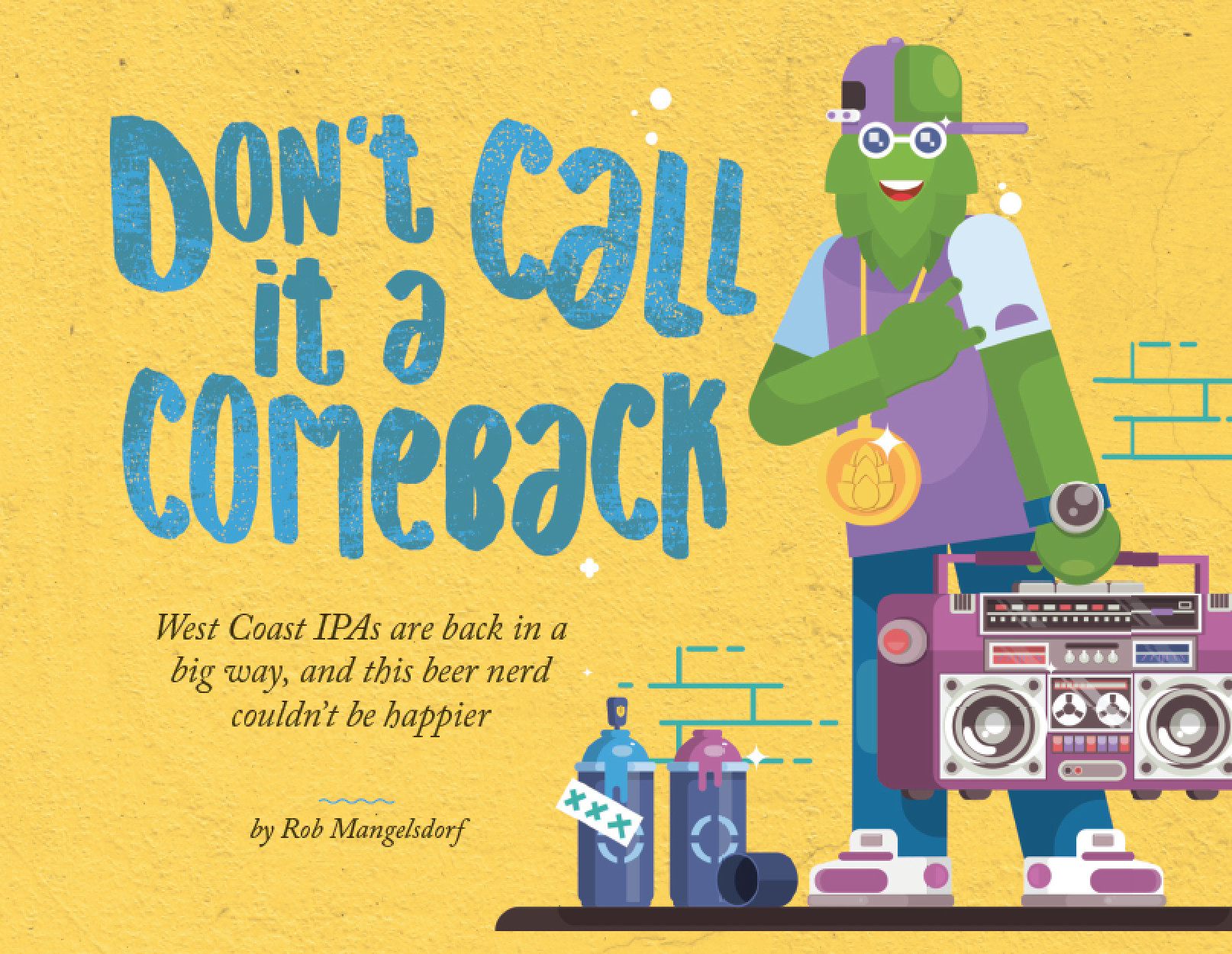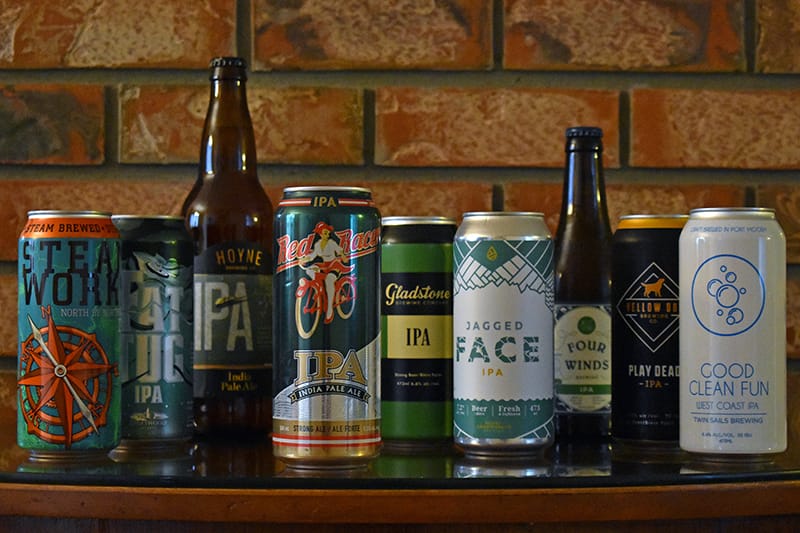
More than any other style, the India pale ale has become synonymous with craft beer. Back in the 1980s and ’90s, when the craft breweries here on the West Coast first decided to make beer with actual flavour, they adapted the English IPA style by loading it up with a metric shit-ton of hops.
The first hop-forward IPAs heavily featured Cascade hops and the other “Big C” hops (Centennial, Columbus, Chinook), because at the time, they were pretty much the only varieties commercially available locally. These hops were largely developed to pack as much alpha acid as possible, allowing industrial-scale macro beers to use far less hops to bitter their beers.
The whole idea behind what become known as the West Coast-style IPA is that the beer would feature a slightly stronger, maltier character than, say, a pale ale, and that added sweetness and body would help balance out the high hop bitterness, which would, in turn, dry out the finish. The result was a beer that was deceptively strong and bursting with flavours of grapefruit, citrus and pine, blowing the minds of those of us who were raised on limp, lifeless lagers.

“I can say without a doubt that the West Coast style of IPA is what really got me obsessed with beer,” says Aaron Colyn, brewer and owner of Twin City Brewing in Port Alberni, and maker of one the finest West Coast-style IPAs in the province right now, Run of the Mill IPA. “During my university days, Driftwood’s Fat Tug was still very new, Phillip’s Hop Circle was a staple in my fridge and Central City’s Red Racer IPA was pushing some bright grapefruit-pine hop flavours that no one could really match at the time.”
But soon, things got a bit crazy. Breweries tried to out-do each other with the amount of IBUs they could pack into their beer. It became a hops arms race and the West Coast-style IPA soon became associated with unpalatable bitterness. We all know someone who’s been put off of craft beer because it’s “too hoppy.” Probably because they were looking for an Alexander Keith’s IPA and got Red Racer IPA instead.
And the beer world moved on. The West Coast-style IPA became passé, supplanted by an ever-growing list of IPA variations that captured the public’s imagination. White IPAs, black IPAs, session IPAs, Belgian IPAs. Finally, an IPA style emerged that was everything the West Coast style wasn’t: the East Coast IPA, a.k.a. New England IPA, a.k.a. Northeastern IPA, a.k.a. hazy IPA. Popularized by American breweries like Alchemist and Tree House, the East Coast-style IPA focuses on fruitier hop varieties like Citra, Amarillo, Mosaic and Southern Hemisphere hops like Galaxy and Vic Secret, as opposed to the Big C hops. While West Coast-style IPAs are known for their bitterness, East Coast-style IPAs are nowhere near as bitter, and can even be slightly sweet. And whereas the West Coast style generally features a clean yeast character to avoid overshadowing the hop profile, the East Coast style uses fruity, ester-rich English ale yeast strains to complement the more fruity hops.
Then there’s the most obvious difference: East Coast IPAs are hazy AF, with a thick, pulpy body that can resemble orange juice.
“I think the West Coast-style hasn’t been in the spotlight with all the other rapidly evolving trends,” says Colyn. “I think many brewers and consumers have enjoyed the variety of new tropical and juicy hop strains that have emerged in recent years and there are some exciting flavours there to explore.
“However, West Coast IPAs have been around a bit longer, the style is a little more clearly defined, and I think people will and do go back to them.”
And for good reason. Out of the spotlight for the past five years, the West Coast-style IPA has been quietly evolving, becoming more refined and approachable. It’s learned some valuable lessons from its East Coast cousin: it’s gained balance, incorporated new hop varieties and got back to its roots and played to its strengths. The classic resinous grapefruit and pine character is still there, but now there’s more depth thanks to an increased focus on aroma hops and complementary malt and yeast profiles. A better understanding of the effects of dissolved oxygen and improved production techniques—a major concern for East Coast-style beers—has also benefitted the West Coast style.
The result is flavourful, increasingly sessionable and infinitely pairable with food.
It’s telling that the winner of Beer of the Year in The Growler’s 2019 Craft Beer Readers’ Choice Awards was Driftwood’s Fat Tug, a classic West Coast-style IPA.
If you’ve been avoiding West Coast-style IPAs lately, it might be time to get reacquainted.
“You might flirt with New England IPAs, hook up with a tropical hazy once in a while. Heck, even a fling with the odd Brut IPA if you can still find one,” says Colyn. “But the West Coast IPA is gonna be the one you bring home and introduce to mom and dad.”




